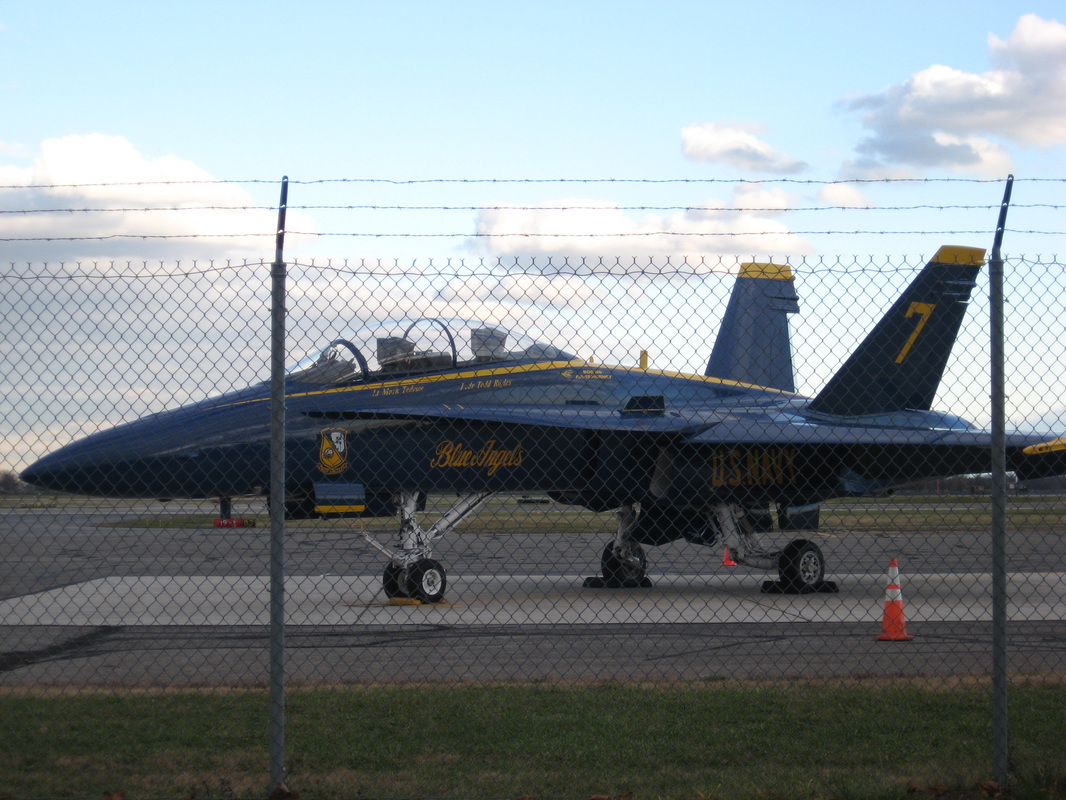Skies clear. Wind at 6 knots from 320°. Altimeter at 29.95”. Temperature is 14°C/ 58°F. Pretty much a perfect day to fly. I got to the flight center 30 minutes early to give myself enough time to get the weather, ATIS, figure out landing and takeoff distance, and determine the weight and balance for the airplane. Today’s lesson was going to be a fun one. We would start by taking off runway 32, and travel north to the north practice grounds. After doing a few stall recoveries, I was going to go up to Bridgeport Airport to practice touch and goes there. I had never been to Bridgeport and was excited to visit a new place. After all, that’s what flying is all about, traveling. However, I never made it to Bridgeport. I didn’t make it to the practice field. I didn’t even make it off the ground.
After I got all the information I went out to the plane to inspect the plane and make sure everything was good. As I went through the checklists, I made sure every item was correct, as I usually do. First the cockpit checklist, then the right wing followed by the forward fuselage. Next was the left wing and finally rear fuselage. After all that I did a complete 360° walk around and was confident the plane was all set. I went back into the cockpit and got ready for the flight. As I waited for my instructor to come out, I opened the aviation map to the places I would be at, and got the frequencies I would need for the new airport I was going to.
My instructor finally came out checked the airplane himself to make sure I didn’t forget anything and he hopped in the plane as well. I diligently went through the pre engine start checklist:
Seats/seatbelts- on
Fuel selector- switch
Flaps- set 0
Circuit breakers- set in
Electrical switches- off
Mixture- full forward
Throttle- open 1/4th
Panel lights- as required
Checklist complete
Time to start the engine:
Battery master switch- on
Alternator- on
Fuel pump- on
Prime- 3 seconds
Prop area- cleared
Starter- engage
As the engine roared alive, I finished the first few checklists and got ready to taxi. I collected the weather, checked my brakes, and turned on all the lights. I radioed to the company’s frequency that I was outbound and made my way for the runway. After calling up ground control, I got a clearance to taxi to runway 32 via alpha, cross runway 1, to alpha run up area.
In the run-up area, I pulled the plane into the box, set the parking brake and went through the before takeoff checklist
Flight controls- free correct
Directional gyro- set to magnetic compass
Stabilator trim- neutral
Flaps- set 0
Windows/doors- locked
Seatbelt- on
Set throttle to 2000 rpm- set
Check magnetos- FAILED
As I was doing the before takeoff checklist, I went to check the magnetos. As I turned the key to the left magneto, I read a 150 rpm drop. Normal. I turned it back to both then to the right magneto. As I did so, the engine’s rpm started fluctuating uncontrollably. Magnetos are supposed to make the engine rpms drop no more than 175, but in this case, the rpms dropped well over 500 rpms. A problem. My instructor didn’t expect me to be able to fix the problem or know what to do so he helped me out. We idled in the run-up area and waited a few minutes to try it again. After trying it again, the same thing happened. The rpms dropped about 600 this time. My instructor called state ops and told them we were inbound in an aircraft with a faulty left magneto. My day was over.
After I got all the information I went out to the plane to inspect the plane and make sure everything was good. As I went through the checklists, I made sure every item was correct, as I usually do. First the cockpit checklist, then the right wing followed by the forward fuselage. Next was the left wing and finally rear fuselage. After all that I did a complete 360° walk around and was confident the plane was all set. I went back into the cockpit and got ready for the flight. As I waited for my instructor to come out, I opened the aviation map to the places I would be at, and got the frequencies I would need for the new airport I was going to.
My instructor finally came out checked the airplane himself to make sure I didn’t forget anything and he hopped in the plane as well. I diligently went through the pre engine start checklist:
Seats/seatbelts- on
Fuel selector- switch
Flaps- set 0
Circuit breakers- set in
Electrical switches- off
Mixture- full forward
Throttle- open 1/4th
Panel lights- as required
Checklist complete
Time to start the engine:
Battery master switch- on
Alternator- on
Fuel pump- on
Prime- 3 seconds
Prop area- cleared
Starter- engage
As the engine roared alive, I finished the first few checklists and got ready to taxi. I collected the weather, checked my brakes, and turned on all the lights. I radioed to the company’s frequency that I was outbound and made my way for the runway. After calling up ground control, I got a clearance to taxi to runway 32 via alpha, cross runway 1, to alpha run up area.
In the run-up area, I pulled the plane into the box, set the parking brake and went through the before takeoff checklist
Flight controls- free correct
Directional gyro- set to magnetic compass
Stabilator trim- neutral
Flaps- set 0
Windows/doors- locked
Seatbelt- on
Set throttle to 2000 rpm- set
Check magnetos- FAILED
As I was doing the before takeoff checklist, I went to check the magnetos. As I turned the key to the left magneto, I read a 150 rpm drop. Normal. I turned it back to both then to the right magneto. As I did so, the engine’s rpm started fluctuating uncontrollably. Magnetos are supposed to make the engine rpms drop no more than 175, but in this case, the rpms dropped well over 500 rpms. A problem. My instructor didn’t expect me to be able to fix the problem or know what to do so he helped me out. We idled in the run-up area and waited a few minutes to try it again. After trying it again, the same thing happened. The rpms dropped about 600 this time. My instructor called state ops and told them we were inbound in an aircraft with a faulty left magneto. My day was over.

A common airplane magneto.
A magneto is a device inside the engine cowling which is responsible for starting the aircraft’s engine. The planes I use have two magnetos. This is for system redundancy, as well as for increased performance. With one magneto, the engine could get up to 2500 rpms, for example. However with 2, the rpms could go up to 2700 rpms. However, each one can produce 2500 rpms. So with 2, there’s added power, but not double power. A magneto is an electrical generator that uses permanent magnets to produce alternating current. This means that no power is needed to fire the magnetos because they operate on magnetism. So if there were to be an electrical failure in flight, the engine would still be able to run. The magnetos send an electric current to the spark plugs, in the cylinders, which ignite the fuel/air mixture which burns, turns the crankshaft, which turns the propeller. The turning propeller produces thrust and the plane moves through the air. So when I did the right magneto check earlier today, it dropped more than 175 rpms. This means that the right magneto wasn’t functioning properly and needed to be looked at.
A good lesson, but at the cost of a flight lesson. Luckily I didn’t get charged for the time I was in the airplane.
A good lesson, but at the cost of a flight lesson. Luckily I didn’t get charged for the time I was in the airplane.



